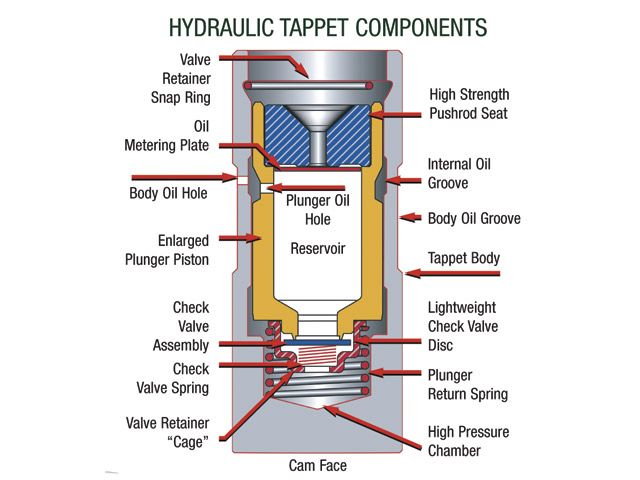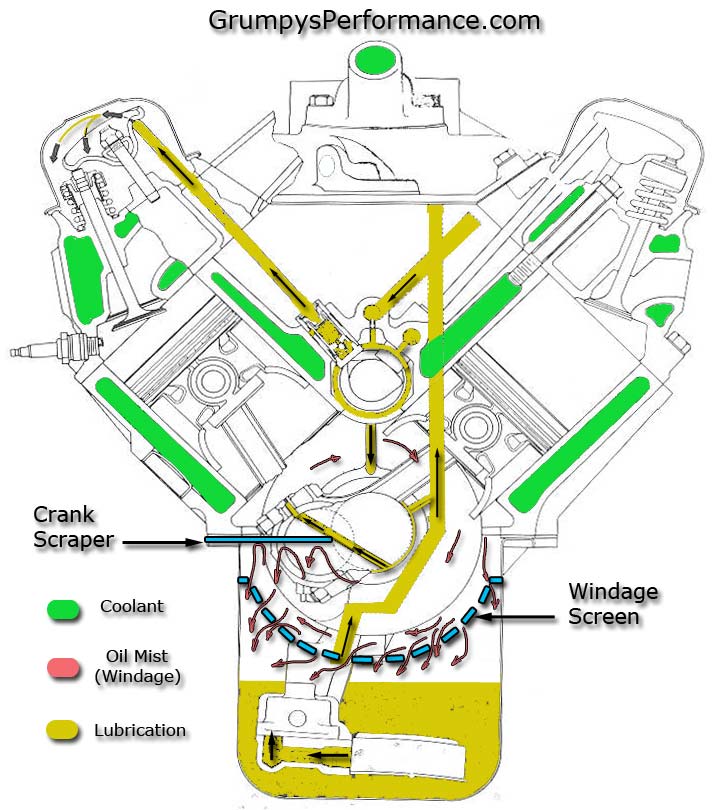BILLY said:Good morning, Grumpy. I've got a question about a 1995 LT1 engine. I've built several (50+) engines over the years but I'm having a problem that I can't seem to figure out. Two years ago I built a killer LT1 for my Impala SS. When I built, on the initial startup, even after priming it, I noticed that the oil took a long time to reach the rockers. I drove to St. Louis (500 mi) and the car was a little noisy but not too bad. It's been getting noisier all the time and I still have very little oil to the rockers.
The rockers are the Comp Pro Magnums steel ones. I made a mistake and used a Melling high volume/high pressure pump. When I start the car I have 80 PSI and when it's hot I have 45 at idle. I'm using stock LS7 lifters. I had to change them because of a tranny problem. I screwed up on the shift points while programming and over revved in second. One of the original LS7 lifters came apart. No engine damage luckily. I also have hardened pushrods /guideplates, and I've tried 2 different sets of springs. Beehives and some that are supposed to work with my cam.
I guess my question would be what could cause the slow oil flow to the rockers. I even went so far as to change out the rockers with a set of shaft mounts that I had lying around because I thought the bearings may have shit the bed because of low oil flow. It was still noisy.
I didn't drill and tap the oil galley plugs on the front of the block and was wondering if one of those popped out would I still have the oil pressure I do now? I've never seen this before and am ready to pull the engine but I thought Id ask if you have any ideas before I do.
My cam has pretty steep ramp rates and around .580 lift and duration in the 242 range. I'm running a Dragonslayer crank, Oliver rods and Mahle pistons. Lloyd Elliot did the porting. I have 11:1 compression and don't get any knock count with my current tune. I'm just lost and don't get it. Never had this problem before.
Thanks
obviously I can,t be sure without some testing but as you state it sounds like theres limited oil getting to the rockers and you certainly have the oil pressure and flow rates so that indicates a blockage or the lifter adjustments too tight,yes Ive seen engines where the staked in front steel, pressed in plugs in the lifter gallery plugs blew out, but that normally results in a significant drop in oil pressure, so I don,t think thats the cause, here as a first test ID strongly suggest doing an oil change and use 10w30 oil and a wix or pureolator oil filter, then adjusting the rockers at idle just the same way you adjust flat tappet hydraulic lifters IE back off the rocker nut till it clicks, then tighten it just to the point the click stops then add an additional 1/4 turn pre-load
if that cures it you know its mostly having the pre-load to tight on the rocker adjustment which is VERY VERY COMMON on hydraulic roller lifters
now you can also have a valve train geometry issue or condition where the rocker geometry doesn,t allow the holes in the lifter, rocker and push rod to fully line up and that can limit oil flow to the rocker
OR the cam bearings may be installed incorrectly



